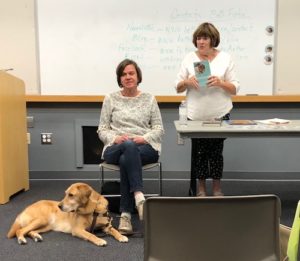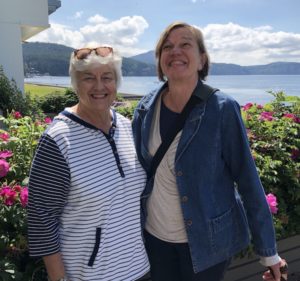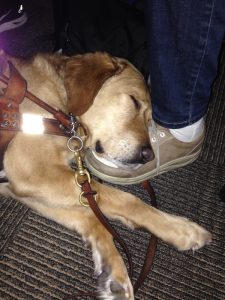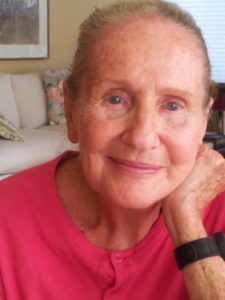Benefits of Teaching Memoir: Every Week a History Lesson
July 13, 2018 • 8 Comments • Posted in book tour, careers/jobs for people who are blind, memoir writing, public speaking, teaching memoir, travel, visiting librariesA good friend of my sister Cheryl in Anacortes, Washington is in a book club, and on Monday afternoon I attended as a guest author. When one of the members said she loved how much Writing Out Loud taught her about Chicago, her fellow members swelled up in a chorus of uh-huhs and yeses. The reaction surprise me.

My sister Cheryl and her friend Laura organized my appearance at the afternoon book club and here, that evening at the Anacortes Library, where Laura introduced me.
But come to think of it, I guess the City of Chicago is a character in Writing Out Loud, too. Between Wanda’s stories of the segregated high school she and Minerva attended before Brown V. Board of Education, excerpts of Hannelore and Myrna’s personal essays of how they ended up in Chicago and their links to the Holocaust, Bob’s “Prankster” gang on Chicago’s West Side during the 1940s, and accounts of my own life here with Mike and my Seeing Eye dog Whitney now, well…readers do get a picture of Chicago’s culture, what drew people to Chicago and what It’s like to live here now.
How I’d love to hear 500-word essays written by the women in Monday’s book club. Imagine all I’d learn about the history of Fidalgo Island and what it’s like to live there — Anacortes, population 15,000 is the largest city on the island.
The book club in Anacortes was the first guest author presentation I’ve done outside of the Midwest, the first time I’ve visited a book club with members who had never set foot in Chicago. What fun it was to hear their impressions of Chicago before — and after — reading Writing Out Loud.
“And your descriptions of walking to class,” one said. “I could just picture it.” Now that statement really surprised me.
My descriptions are limited to sounds, textures, smells and tastes. “There’s only a few photos in Writing Out Loud,” I pointed out to them. They all sat silent for a moment. I could hear them thinking. “That’s right,” one finally said. “But I really do have a picture in my mind.”
That evening I was the guest author at an event open to the public at the Anacortes Public Library. After introducing himself and letting me know he’d just finished readingWriting Out Loud, a guy in the audience said he had a question. “What did you study in college?”
Did he know I don’t have a Master of Fine Arts in creative writing? Did he not like the book? Did he wonder what sort of schooling would lead to a book like this? I answered with a question of my own: “Why do you ask?”

That’s me and my sister Cheryl outside their home in Anacortes. Burrows Bay–which Cheryl and her husband wake up to every morning–is behind us. It’s also where Mike Kayaked on Monday.
The man’s answer made me beam. “Well, there’s so much history in this book,” he reasoned. “I just figured you must have been a history major.” I hadn’t intended on making Writing Out Loud serve as a history book, but the excerpted essays by writers in my classes (and the little background information I provide to set the scene) do leave readers with history lessons from the experts: the people who lived through it.
Thank you, Cheryl and Rich for hosting us in beautiful Anacortes, thank you Laura for hosting the book club, and thank you Anacortes Public Library for reminding me how fortunate I am to be leading these classes in Chicago. I learn far more about culture and history by hearing the unique first-hand accounts the writers read out loud every week than I ever did in school. Every week is a history lesson.

